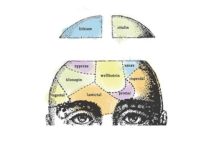If you look at the adverse events section of the sertraline (Zoloft) label you will see that sertraline has been linked to psychosis, hallucinations and aggressive reactions. It’s there in small print. These links have been there since the mid-1990s.
Vanishingly few doctors understand what is going on here. They see a label saying something like “There have been reports of violence and psychosis on our drug so we are including these here.” They read this as: Look at this wonderfully transparent and responsible company who are putting in the label even whacko reports from nutters and scientologists — am I going to believe this? Don’t be ridiculous.
In fact what is going on is that Pfizer and other companies have reports saying that no matter what way they spin it, they cannot explain it in any other way but that their drug has probably caused these reactions.
Our Drug Causes
From internal Pfizer documents:
“As of 15 March 1994, 13 cases coded . . . ‘psychosis’ in sertraline treated patients patients were identified. . . . One case was poorly documented and contained insufficient information to be properly evaluated. Four cases could have been related to the underlying disease, two other cases to concomitant medication (unspecified sleeping pill or alprazolam) and one case to a mutiple drug overdose. These eight cases are excluded from further discussion.
All of the five remaining cases were spontaneously reported to Pfizer. These cases are summarised in the attached table. In three cases, the psychosis either improved or resolved after either discontinuation of sertraline therapy or a decrease in sertraline dosage. In one case the event continued and in one other case the patient died.
In summary, a review of Pfizer’s early alert safety database identified cases . . . five of which were sufficiently detailed to evaluate and had no other obvious cause. Therefore it is recommended that ‘psychosis’ be added to the Adverse Reactions section of the sertraline International Product Document (Core Data Sheet).”
It was the same for aggression, agitation and hallucinations.
ABCD: “Anything But the Company Drug”
In 1952, Parke-Davis were faced with cases of aplastic anemia on Chloromycetin. This was their best-seller. It had made the company the biggest pharmaceutical company in the world — at a time when Pfizer was a minnow in the market.
Faced with this threat, the company created an Anything But the Company Drug playbook. This involved digging deep into the medical records, and circumstances, of the person reporting a problem in order to find the ingrown toenail at the age of two that was possibly the cause of the problem. And of course if something else was possibly the cause — like the unnamed sleeping pill above (better unnamed than named) — then we can’t conclude that our drug did it.
Part of the problem for Pfizer, which swallowed up Parke-Davis decades ago, is that in some of their cases the problems cleared up when sertraline was stopped. This evidence of challenge-dechallenge is still the best evidence for cause and effect there is. (Randomized Controlled Trials are the gold standard way to hide adverse effects). Parke-Davis was in a handy position with aplastic anemia — the problem doesn’t clear up when you stop the drug. The patient — child, adult, black, white — stays fucked.
Skin in the Game
Quite aside from any large print saying our drug can cause aggression or psychosis, the adverse reaction sections of the label of over a hundred drugs says they can cause psychosis — and this is without checking all the others that say they can cause hallucinations or delusions or paranoid reactions.
The adverse reaction section in heading toward a hundred other drugs say they can cause violence, aggression, hostility or homicidal ideation. Again there may be multiple other terms under which these reactions may be hidden. I have to thank Julie Wood for putting in the leg work to track these references down.
The drugs involved include the skin drug isotretinoin. This comes in tens of different trade names, so for it alone there may be close to something like fifty different drugs causing both violence and psychosis.
The other skin drugs recently released, Siliq, Taltz, Otezla and others, will almost certainly have similar reactions soon — or should do.
Other drugs include a host of antibiotics including the fluoroquinolones and many others, steroids, drugs like Advair (salmeterol) and Singulair (montelukast) and Accolate (zafirlukast) for respiratory problems, most of the retrovirals and other anti-viral drugs, as well as mefloquine (Lariam), obviously.
The dopamine agonists are on the list. They are for Parkinson’s disease — or for just little ol’ restless legs syndrome.
It may be little surprise to find the stimulants on the list, but remember that these drugs are being given hand over fist to children. Everyone recognizes the link between street amphetamines and violence, but somehow once the same drugs are channeled through a prescription pad this recognition seems to be laundered away.
The list includes pretty well all antidepressants, and anticonvulsants in addition to a bunch of antipsychotics which note that they can cause psychosis and hallucinations and violence. It also includes the choline-esterase inhibitors given for dementing disorders.
All these cases are interesting because the companies have the chance in most cases to blame the problem on the disease, but there is something about at least some of the cases reported to them that blocks off this easy escape route.
Or Should Do
A few paragraphs up, the phrase “or should do” occurs. Many years ago a number of us had a shock seeing a memo from a Forest lawyer telling staff they should never make causal determinations in the case of any reports to the company of adverse reactions happening on citalopram and escitalopram.
The rough basis for something like this — a strategy first adopted by GlaxoSmithKline — is as follows. Even if by all the conventional rules of cause and effect and by the Federal Judicial Manual sanctioned rules which hinge on challenge and dechallenge (not RCTs) there is no way out of assigning causality, we can still claim that unless RCTs have shown drug A causes problem B there is no way to know for sure that the drug has caused the problem.
So you guys who work for Forest or GSK, despite all logic you have to refrain from assigning causality until the RCTs proving the point get done. The fact that they will never get done, that it would be unethical to do them, is irrelevant. Come to think of it there are no RCTs of anyone ever dying from Zyklon B — maybe time to rewrite that bit of history.
The above scenario is for real. It is not a nightmare. The first person I heard push it was Ian Hudson, then of GSK, now head of Britain’s MHRA (Medicines and Healthcare products Regulatory Agency, similar to the FDA). But it may be the case that at least some people in what Iain Chalmers and Ben Goldacre continue to laud as the most ethical outfit in the universe and in other companies have recognized the lunacy of this and are quietly doing something else.
Difficult to know. But it pays to read the small print and maybe translate it for your doctor — or lawyer.
There are unquestionably many people now in jail who possibly should not be because of a drug they were on, people now dead who should not be because of drugs someone else was on, and people who will not get a fair trial because when it comes to the small print vanishingly few people realize what is being said.














Sertraline was the very first psychiatric drug I had, 2013..two tablets and ended up at A&E, in a totally horrific state that I could not give words to.. I know now that condition to be called Akathisia. The A&E doctor wrote to my GP labeling me with Hypochondriasis.
“There are unquestionably many people now in jail who possibly should not be because of a drug they were on, people now dead who should not be because of drugs someone else was on, and people who will not get a fair trial because when it comes to the small print vanishingly few people realize what is being said.”
Absolutely correct.
Tony Maden – forensic psychiatrist…
https://www.youtube.com/watch?v=X-E1iO3rsVk&feature=youtu.be&t=1710
On the patients.. ‘beyond any moral consideration’ then makes an analogy of patients on CTO’s as ‘prosecuting pigs’. Earlier on he describes the patients as being ‘selfish’ for not taking their medication… neuroleptics….the very drugs most correlated to akathisia the condition which causes violence and aggression.
Report comment
This is what can happen if you make a complaint in a mental health context – in the UK – and why people in this situation do not make complaints.
AJ being sectioned Mar 18, 2015 he tries to record and the social worker stops it.
https://www.youtube.com/watch?v=TaExut-MeAk
The next day at the hospital – with his sister next to him – we discover he had sent a letter of complaint to the local council about the behaviour of their neighbours, which his sister confirms. She goes on to describe his sectioning as “horrifically done”.
https://www.youtube.com/watch?v=lABi4jwiEJ8
Report comment
So want are we going to do to put at stop to all this?
Has to come down to the civil courts, criminal courts, child protection, and then just sidewalk protests to put people out of business.
Who is organizing this?
Report comment
Good. This is one pernicious part of the psycho-pharmaceutical industrial complex and the therapeutic state. To understand the whole story, I recommend the following website: https://psychiatricsurvivors.wordpress.com/2016/05/10/the-truth-about-psychiatry/
Report comment
Truly, big pHarma can be likened to these tiny tots:
http://wac.450f.edgecastcdn.net/80450F/thefw.com/files/2012/01/Family-Circus-Not-Me.jpg
https://en.wikipedia.org/wiki/The_Family_Circus
… an invisible gremlin named “Not Me”, who watches while the children try to shift blame for a misdeed by saying, “Not me.” Additional gremlins named “Ida Know” (in September 1975), “Nobody,” “O. Yeah!,” and “Just B. Cause” were introduced in later years…
Report comment
God Bless you David Healy for continuing to be our voice for those of us psychiatrically drugged for 35 years. I became not only suicidal during my time on the drugs, but extremely homicidal while going cold-turkey off of them. What a living nightmare my life became. The suffering at the hands of my doctors and psychiatrists was endless. I truly am lucky to be alive, and so grateful I lived through the utter madness to see you and so many others advocating on our behalf after being silenced by our mental health-care workers and our psychiatrists.
I can’t thank you enough.
Most sincerely, Sandra
Report comment